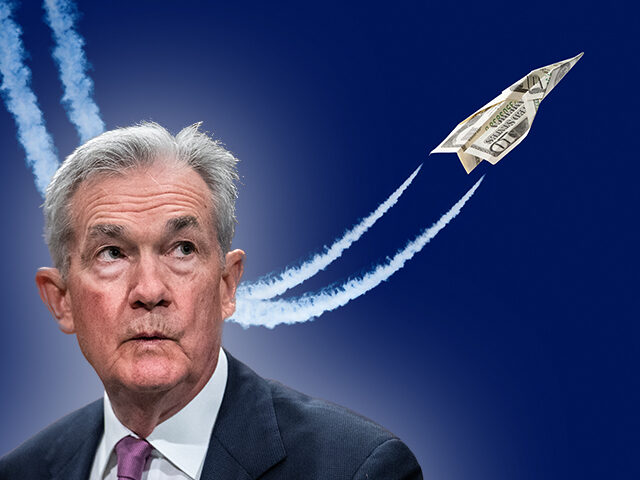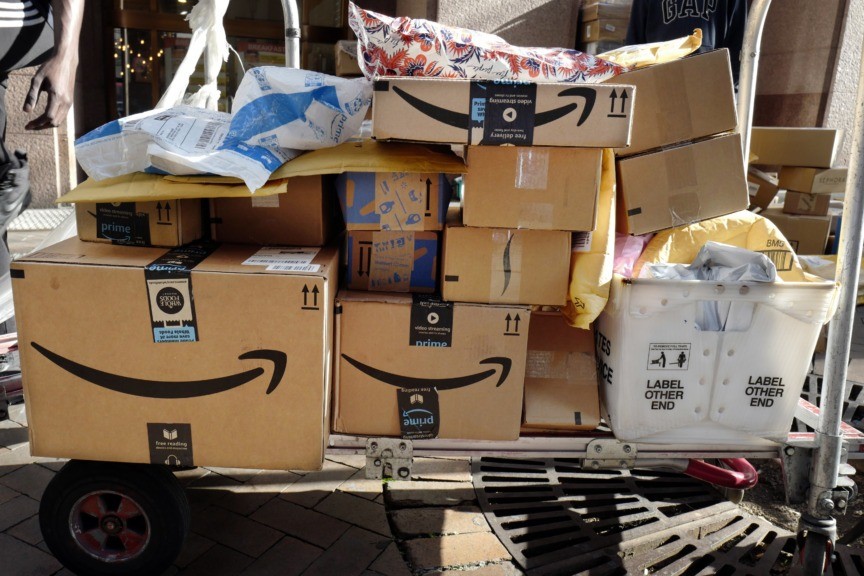Breitbart Business Digest: We're Still in a No Landing Economy
 iStock, Tom Williams/Getty Images; BNN
iStock, Tom Williams/Getty Images; BNN
Consumers Are Shopping But Not Dropping
You can add the collapse of the U.S. consumer to the list of things that nearly everyone has been expecting but shows no signs of actually occurring.
Spending by American households has been one of the primary drivers of elevated economic growth in the post-pandemic period. Almost since the recovery began, however, analysts have been warning that something—inflation exhaustion or the end of excess savings or tighter credit have been popular candidates—would force consumers to retreat.
In theory, this might not be a disaster. The economy would slow but not necessarily fall into a recession. Inflation would likely decline. Indeed, the curtailing of consumer spending even amid low levels of unemployment is one of the central reasons many analysts think we could achieve a “soft landing.”
It's a fine idea, but there is very little evidence that consumers are pulling back in a meaningful way.
April's Retail Sales Were Better Than They Seemed
It's true that job growth and retail sales came in weaker than expected in April. But that is mostly the story of elevated expectations rather than economic weakness.
The economy added 175,000 jobs in April, which is a solid increase. Sixty percent of those were in the private sector, indicating that employers are still seeing enough demand to justify payroll expansion. And it's important to remember that even the non-cyclical government and government-adjacent sectors of the labor market still count when it comes to adding spending power to the private sector. Government and hospital employment may be driven by government spending, but government and hospital employees still buy goods and services from businesses.
There's a good argument that retail sales were actually stronger than they appeared. A major drag on April retail sales came from the “nonstore” component, which is mostly online sales. Around forty percent of online sales are from a single company, Amazon, which had a very large spring promotional event in March that almost certainly pulled forward sales from April.

Amazon Prime boxes are loaded on a cart for delivery. (AP Photo/Mark Lennihan)
Let's run through the recent history of online sales. In February, sales inched down 0.1 percent. In March, online sales jumped 2.5 percent in a single month. The following month, sales fell 1.2 percent. That puts the three-month growth at 0.8 percent, which annualizes to a rate of 3.2 percent. Compared with a year earlier, online sales are up 8.7 percent in the three-months from February through April. Year-to-date, sales are up 10.1 percent compared with the first four months of 2023.
Total retail sales are up 3.5 percent through April compared with a year ago. Excluding cars, trucks, parts, and gas station sales, retail sales are up 4.2 percent. Excluding bars and restaurants, sales are up 3.1 percent. All of those are impressive growth numbers that should undercut any notion that the consumer has run out of spending power.
This is particularly remarkable because these sales tend to be of goods, where inflation has been much more muted than it was at the peak and is much milder than in the services sector. Durable goods prices are actually down 1.9 percent from a year ago, according to the personal consumption expenditure price index through March. So, this growth is not just people spending more for the same basket of goods. It is real growth.
No End in Sight
Surveys of consumer sentiment have softened in recent months, but even when they were weaker than they are now consumer spending was strong. Bank of America's monthly consumer spending indicates that people are actually getting ready to spend even more. Big ticket spending expectations are on the rise, according to Bank of America. Forty-three percent of those surveyed said in the May survey that they plan to buy a vehicle this year, compared with 35.8 percent in the previous month and 41.2 percent a year ago. Plans to buy a home jumped to 24 percent from 18.5 percent.
Services spending is very elevated. Spending at restaurants and bars, the services side of the government's retail sales report, was up 0.2 percent in April compared with March and up 5.5 percent compared with a year earlier. Overall services spending rose 0.6 percent in March, according to the most recent personal consumption expenditure data available. That followed a 0.8 percent increase in February and a 0.9 percent increase in January.
Even lower-income consumers are finding ways to spend. According to Bank of America's credit card and debit usage data, lower-income spending is actually outpacing upper-income spending, even excluding groceries and gasoline. Clearly, very low unemployment, low levels of layoffs, and rising wages are still supporting spending even among Americans at the bottom of the economic ladder.
This means that growth is unlikely to come to a sudden halt. At the same time, inflation is unlikely to meaningfully decline from the three to 3.5 percent underlying rate over the past six months. That will likely mean the Fed will stay on hold until at least after the election and probably until next year.
This is a politically unpopular view. Both conservatives and progressives have a bias right now to see the economy on the verge of collapse. Conservatives expect that Joe Biden's economic policies will undermine growth—leading to a hard landing. Progressives want the economy to weaken just enough—but not more—to justify a Fed rate cut before the election, confirming a soft-landing.
The data, however, tell us that both sides are likely to be disappointed. Growth and inflation are telling us we're still in a “no-landing” economy.
Source link

